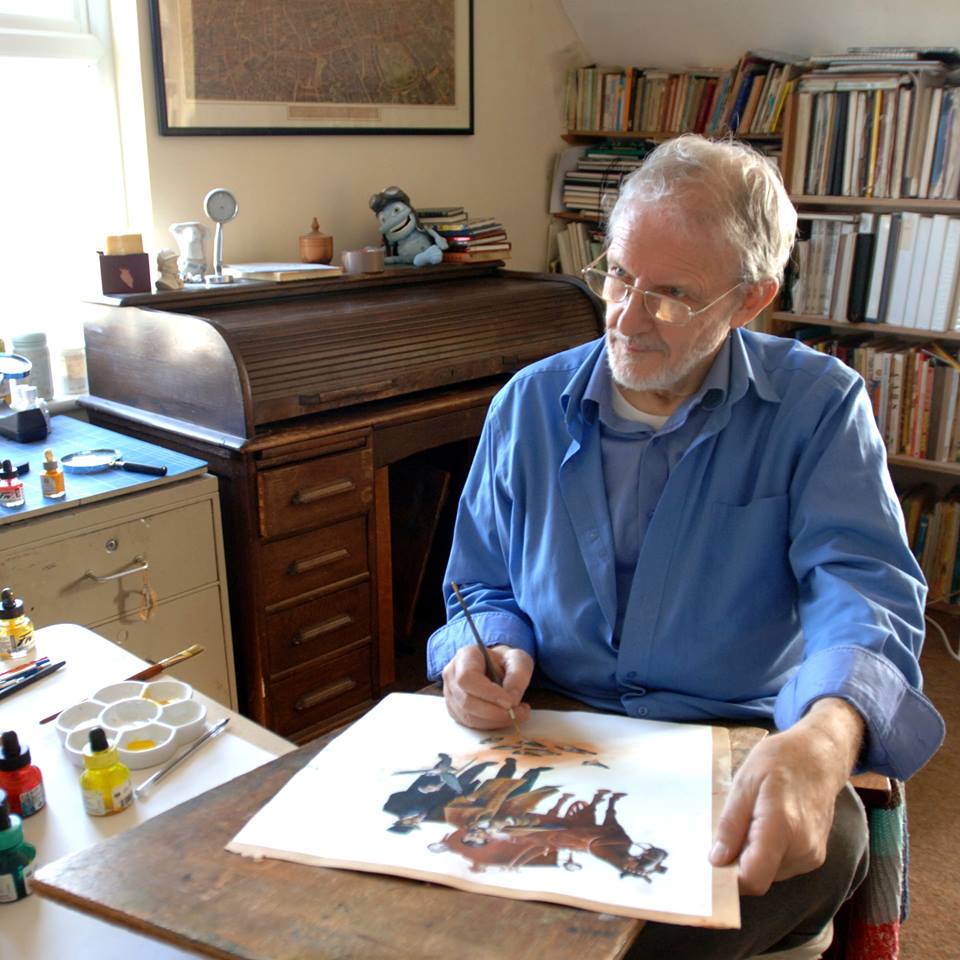
We are very sorry to announce the death of artist, writer and educator Ron Tiner, an occasional contributor to downthethetubes and a much-appreciated advisor to the site. Jim O’Brien pays tribute…
The comic artist and book illustrator Ron Tiner died on 18th October 2025, at the age of 85.
A hugely prolific contributor to just about every British comic from the mid-1970s to the late 1980s, Ron was also a deeply knowledgably scholar of illustration and comic art more broadly. He published a number of reference guides to imaginative drawing and was for nearly a decade a teacher of sequential art at Swindon Art College, on a course he designed and developed.
Endlessly generous with his time and support, Ron encouraged a number of younger artists in the early parts of their careers and was tirelessly helpful to all those seeking to understand the history of the art form that he cared so much about.
Born in Kent in 1940, Ron developed a fascination for pictures as a young boy and drew constantly. Although his parents very much admired what their son could do with a pen and pencil, they nevertheless worried that the life of an artist was too risky a prospect in a family without much money and steered Ron instead into working as a telecom engineer. This lead in time to teaching aspects of the trade to fellow engineers (at Bletchley Park, no less!) and subsequently to a second career as a school art teacher.
Married and with three sons to provide for, Ron nevertheless continued to draw for his own pleasure and began to build up a portfolio of spec comic strip art. In the early 1970s, he forged important links with a number of fellow comic artists and enthusiasts, for example working with editor and publisher Dez Skinn on the fanzine Eureka, and subsequently getting to know Dave Gibbons, through whom Ron was introduced to the legendary Bardon Arts agent, Barry Coker.
It was Coker who got Ron his first commission as a published comic artist in 1976 on the historical strip “Black Jack” in DC Thomson’s weekly adventure title, Hotspur; and, soon after, teamed Ron with Gibbons and further friend Brian Bolland on the Nigerian-market comic, Powerman.

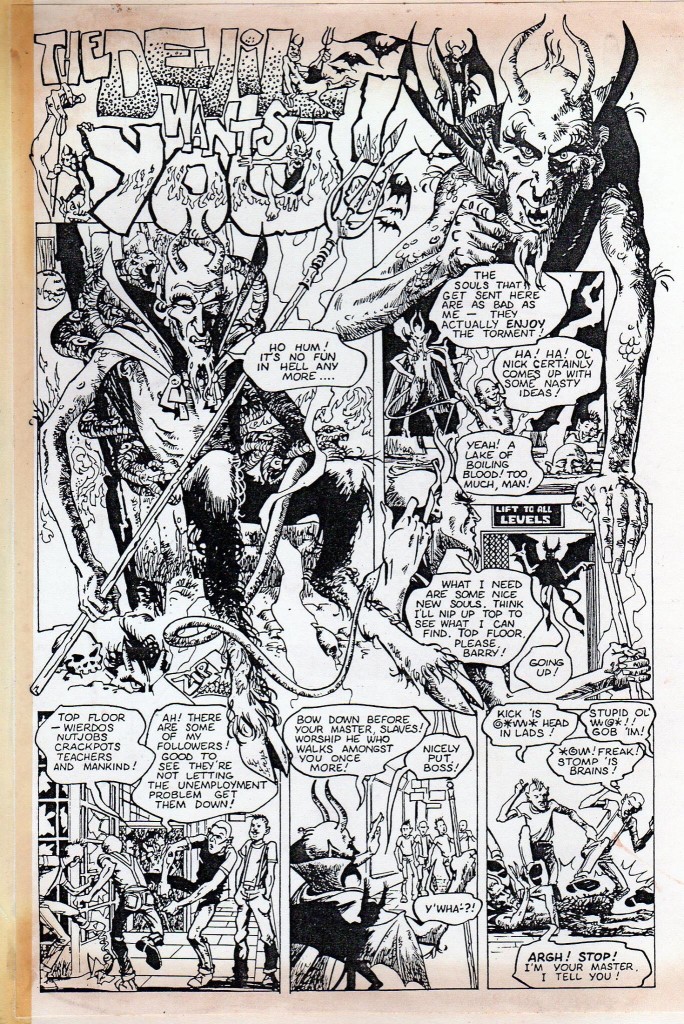
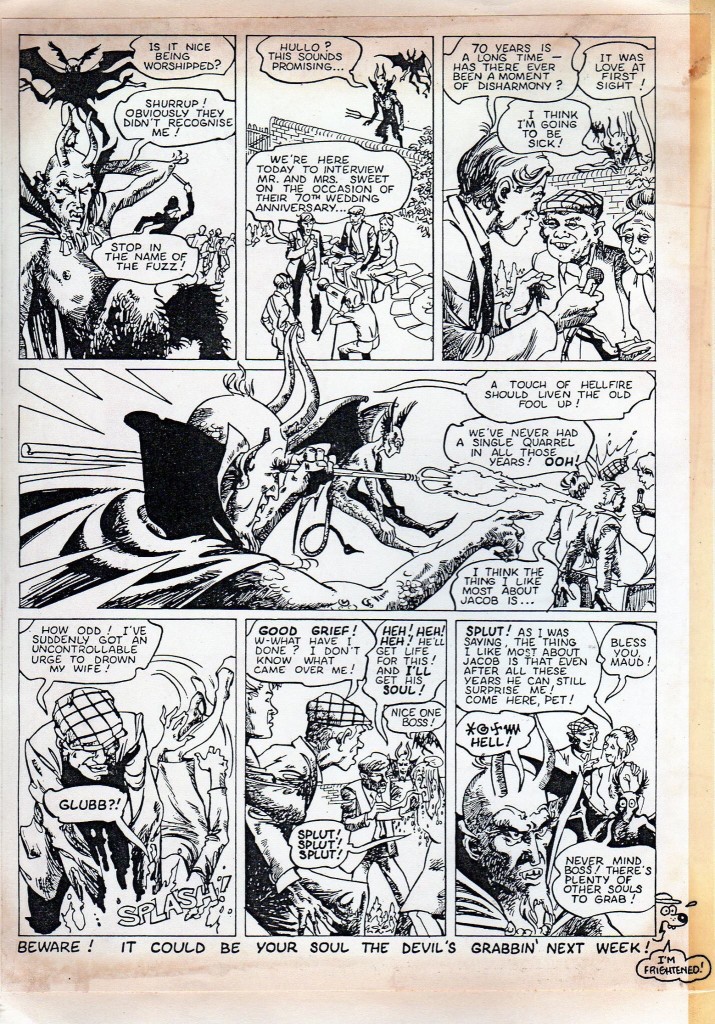
Now earning enough from comics to leave teaching behind, Ron subsequently worked on pretty much every boy’s adventure comic on newsagents’ shelves in the 1970s, contributing several further strips to the Hotspuras well as providing art for stories in Action, Battle, 2000AD, Match and Look-In, to name just a few. Ron also worked extensively for girls’ titles, drawing (and writing) pages for Judy, Tammy (strips there including “Linda’s Fox” in 1981) and Suzy, among others.
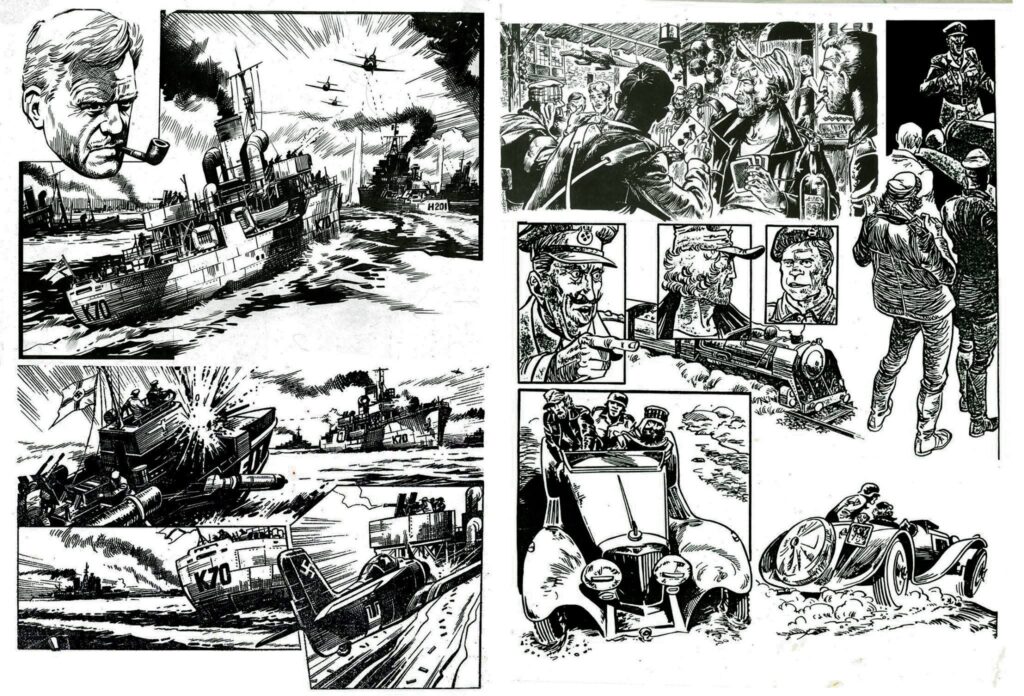
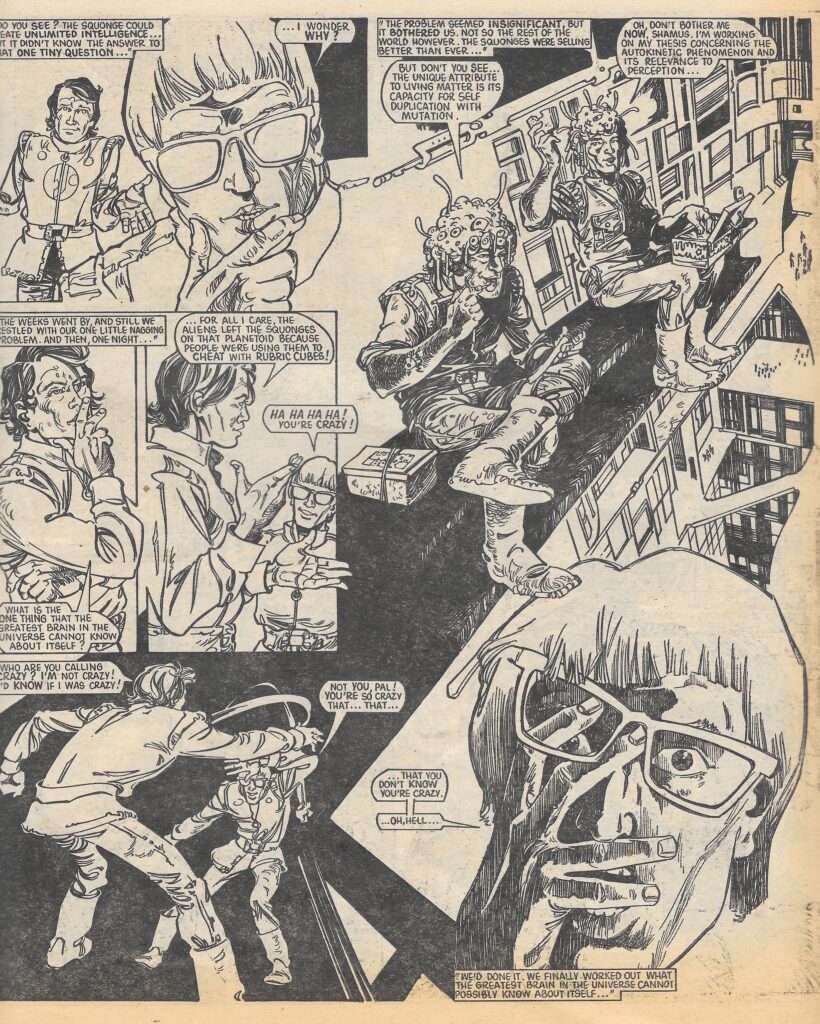
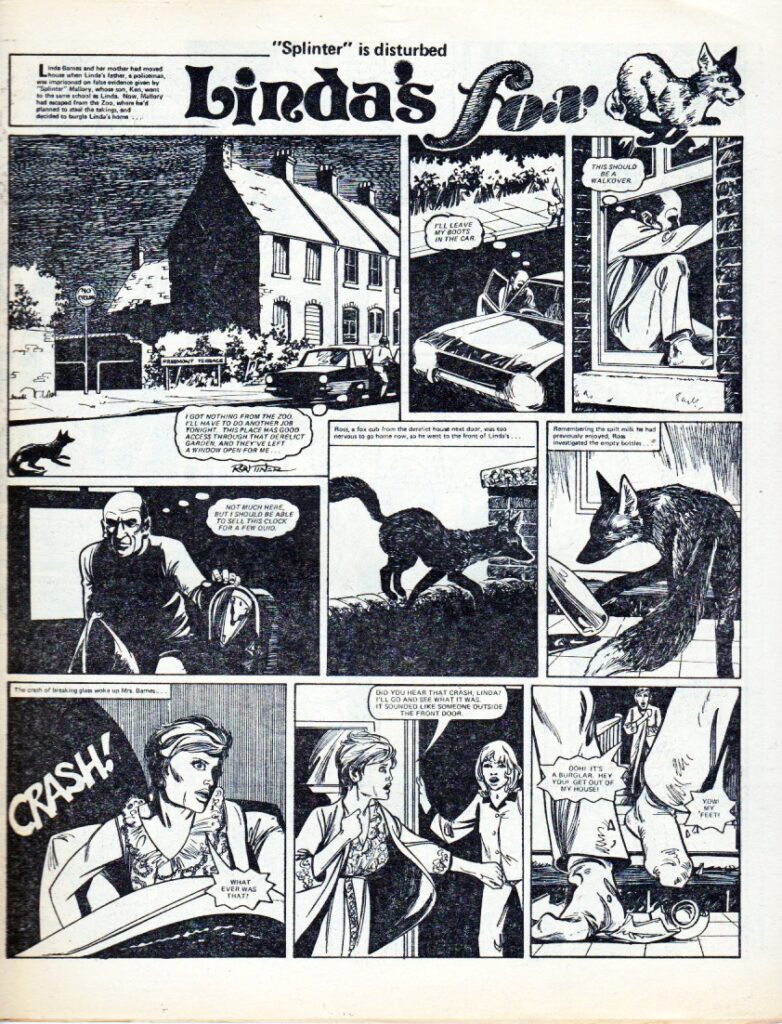
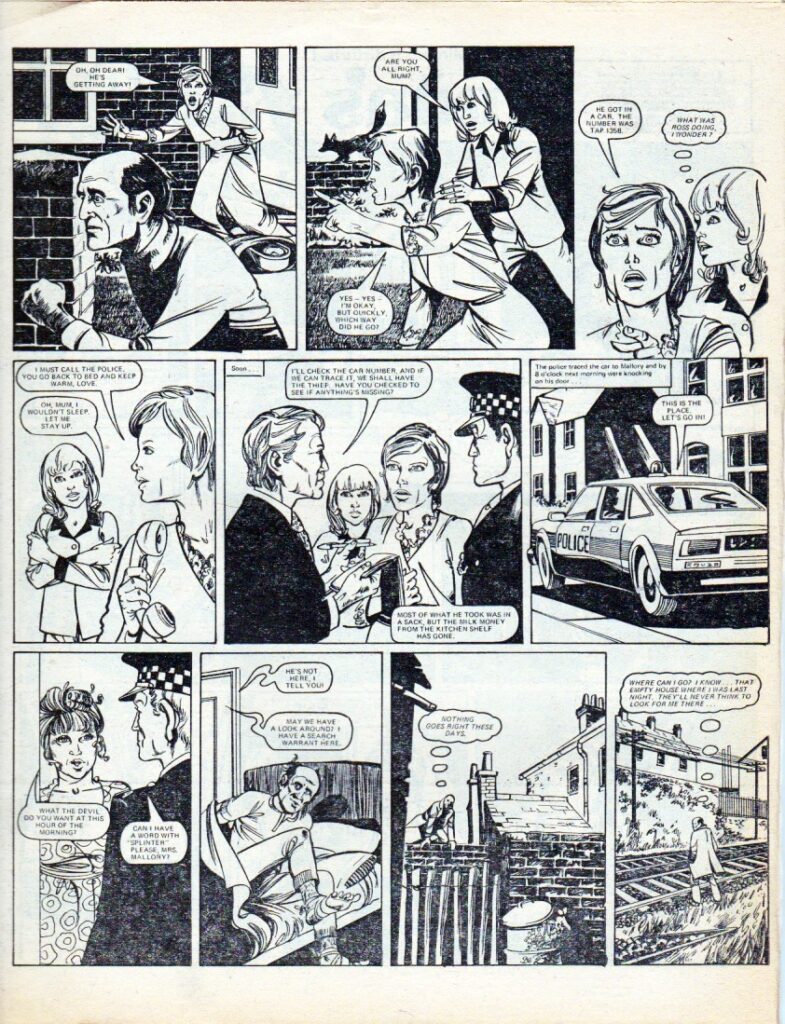
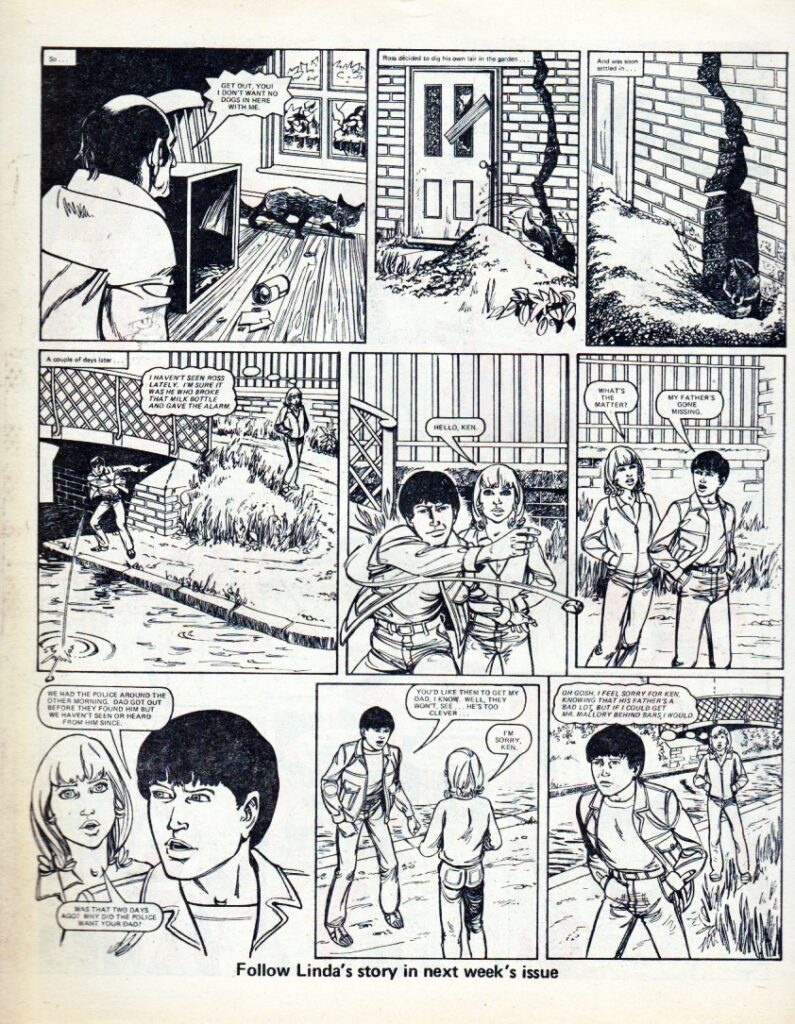



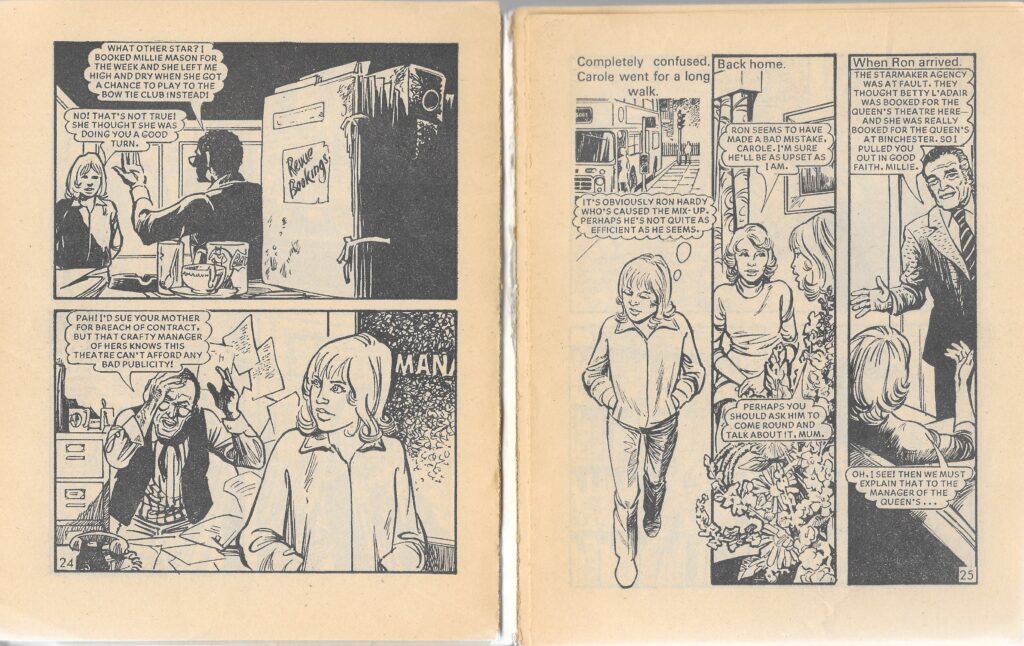

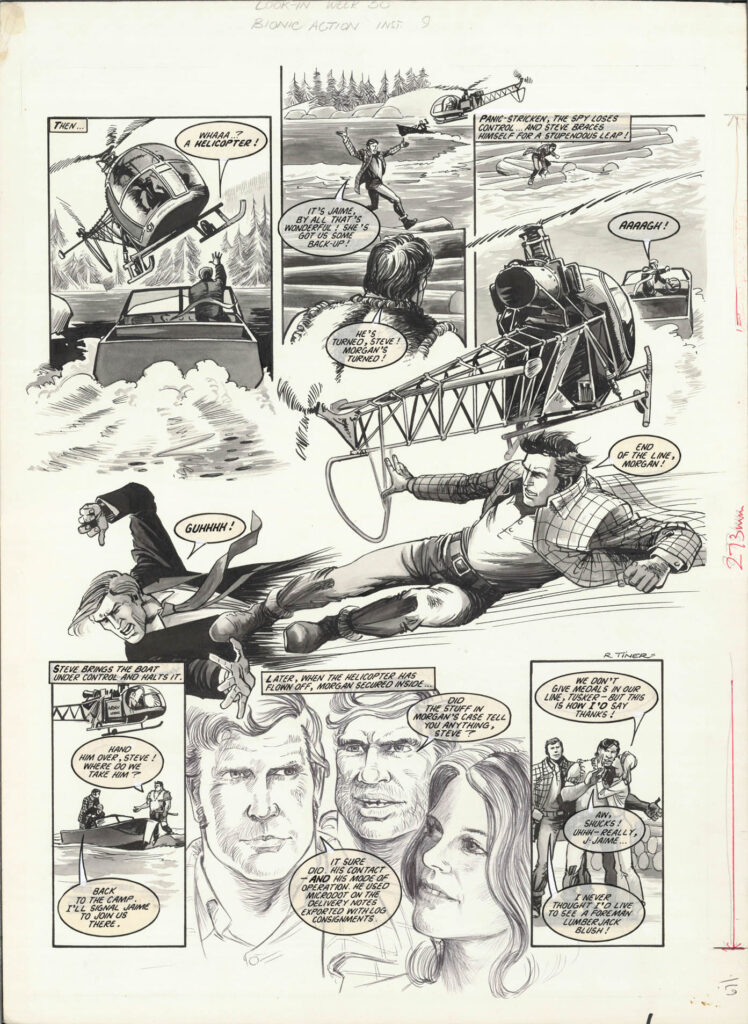
A true journeyman comic artist in the sense of a highly skilled but endlessly adaptable craftsman, Ron was always happy to move from genre to genre, and to modify his storytelling as tastes changed and the market for comic art shifted on its tectonic plates. As the 1980s wore on and the numbers of boys and girls’ titles being published in the UK began to diminish, Ron utilised his talents on both adult comics (with adaptations of Fanny Hill and The Arabian Nights for Fiesta’s STRIP magazine) and the emerging alternative comic scene with strips for Oink! and Brain Damage.


America came calling too, in the shape of Vertigo’s Hellblazer in 1989, although Ron found the editorial strictures at DC frustrating and never looked for work in America again. That said, Ron did make one further significant contribution to American comics, modelling for the artist Dave McKean as Amadeus Arkham in McKean and Grant Morrison’s groundbreaking Batman tale, Arkham Asylum, also in 1989.

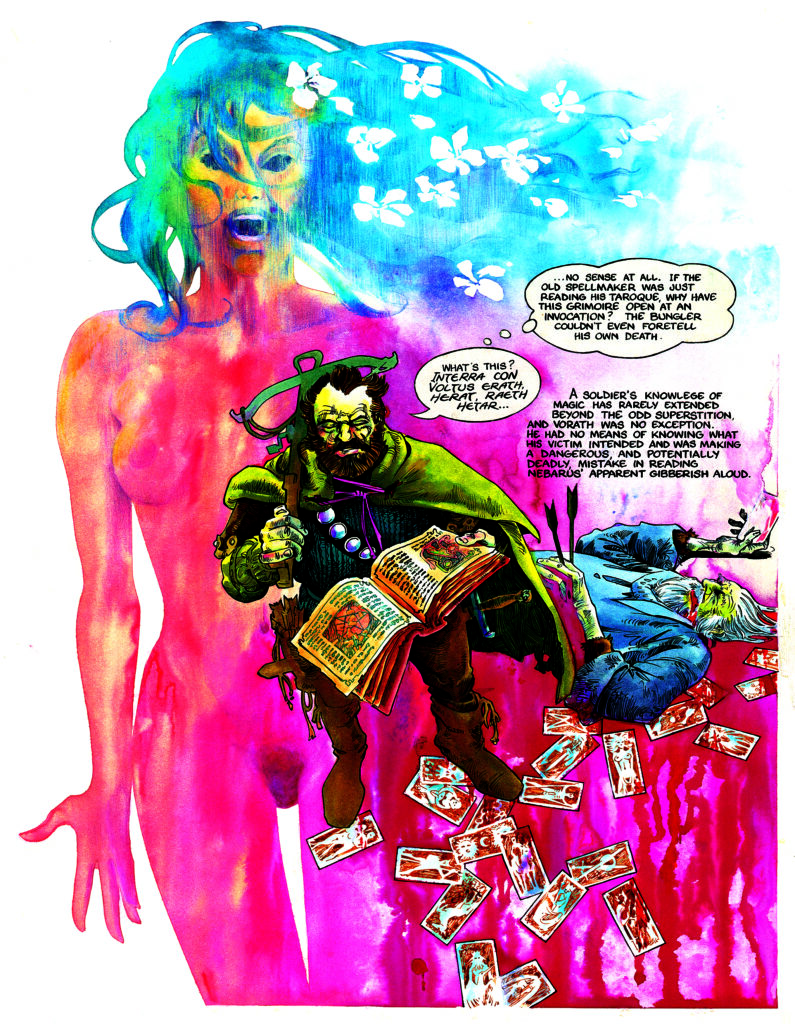

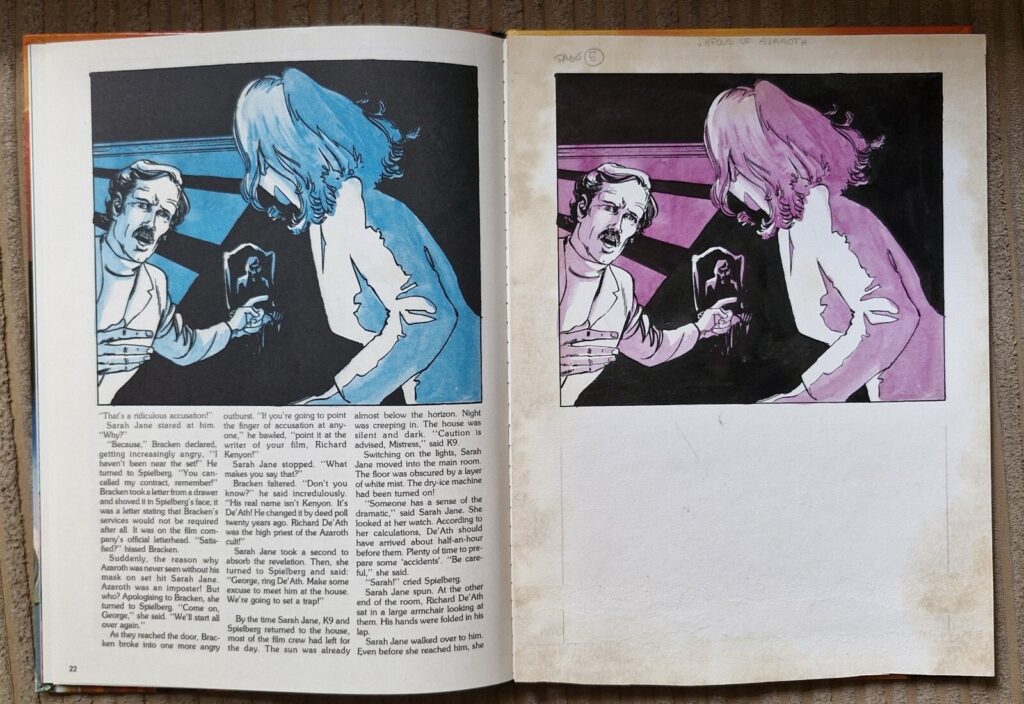
Ron’s artistic focus in the 1990s was increasingly on book and magazine illustration rather than comic art, and he became a regular contributor of both colour and black-and-white illustrations to magazines such as Punch as well as to books published by Heinemann, Oxford University Press, Penguin and Smith Settle.
On many of these latter projects Ron was illustrating the classics of late 19th century English adventure fiction, a genre he particularly enjoyed.

Always passionate about passing on his knowledge and helping others to develop as artists in their own right, Ron published two guides to creative drawing at David and Charles, Figure Drawing Without a Model in 1996, republished last year, and Drawing from Your Imagination in 2008. Both books have been republished worldwide.
The success of the former lead to Ron’s being contacted by Swindon Art College, who at the time were looking to offer students a course in sequential art. Ron created and lead the teaching on this course between 1997 and 2005.

Ron’s only regret in taking up the position at Swindon was that it necessitated turning down a commission from the Italian comic publisher Sergio Bonelli to work on one of their digest-sized comic books, Julia. Italian comic art was a field Ron loved perhaps more than any other and he would have been thrilled to have been able to make a contribution to it. Over the years Ron built up a substantial collection of books by Italian masters such as Sergio Toppi, Dino Battaglia and Aldo Di Gennaro.
Likewise, Ron collected books and art by all of the major European and South American masters of comic art including Moebius, Patt, Palacios, Font and Alberto Breccia, using these both in his teaching and lecturing and as the basis for the MA he completed at Falmouth University in 2006 on graphic narratology.
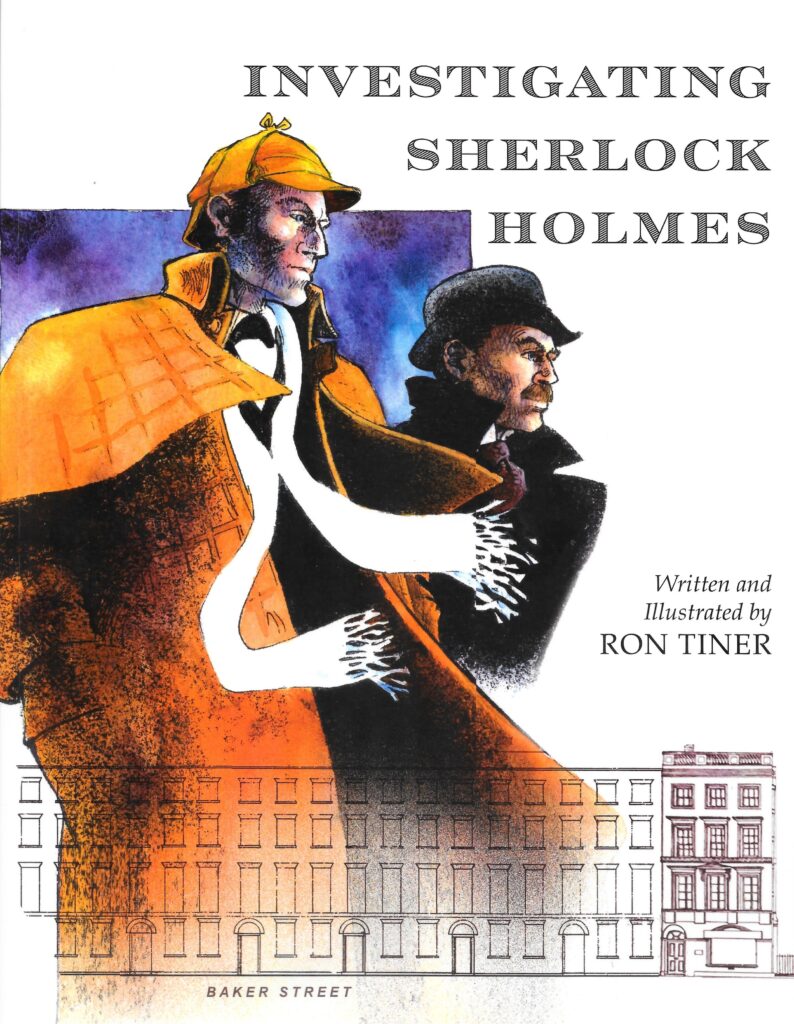

Still writing, drawing and occasionally lecturing well into his 80s, Ron’s last great project was his own Investigating Sherlock Holmes, published by Austin Macauley, for which he wrote the entire text and provided all the illustrations.
On a personal note, I count myself incredibly fortunate to have got to know Ron some twelve years ago. A fascinating man and a hugely talented artist, he was also a kind and conscientious friend, and I will miss his company and good cheer very much.
Jim O’Brien
Ron Tiner, 8th May 1940 – 18th October 2025
Jim O’Brien works in education but also writes about comics, illustration and film for a variety of magazines, including Comics Rule OK and Battling Britons, Illustration (cellopress.co.uk), and Sensational Sixties (hemlockbooks.co.uk)
• Read Ron Tiner’s study of artist Alberto Breccia here on downthetubes
• Comic Art Fans: Art by Ron Tiner
• Internet Speculative Fiction Database Profile
Recommended Reading…
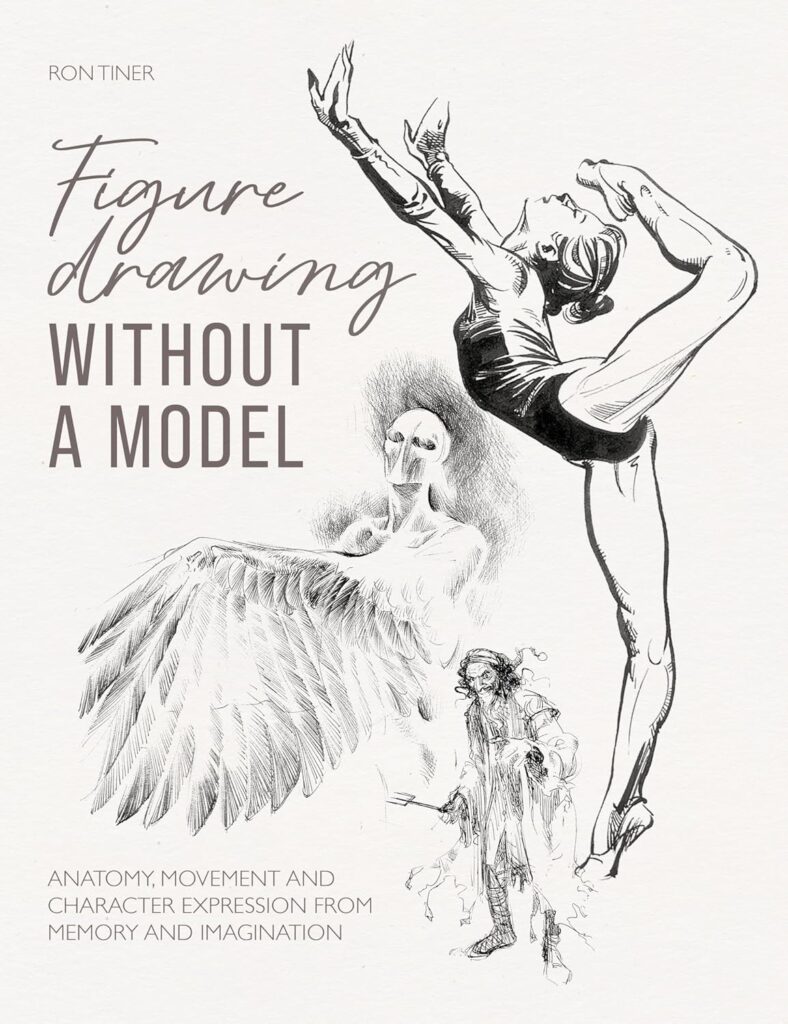
• Figure Drawing Without a Model – 2024 edition
From the basics of drawing from life, to drawing the human figure from memory, Figure Drawing without a Model is the perfect introduction to the technique of drawing accurate and evocative figures without a life model.
Ron Tiner offers a course of instruction illustrated with his own work that is designed to encourage artists of all levels and abilities, including cartoonists and graphic artists.
A comprehensive manual of creative drawing covering everything you need to know to draw the human figure from memory and imagination.
• Mass: The Art of John Harris by John Harris with Ron Tiner
Back in 2000, Paper Tiger published a collection of art by John Harris which have inspired other artists and film directors ever since. John collaborated with Ron Tiner on the text, who transcribed from their taped conversations in such a way that the reader can begin to understand the background
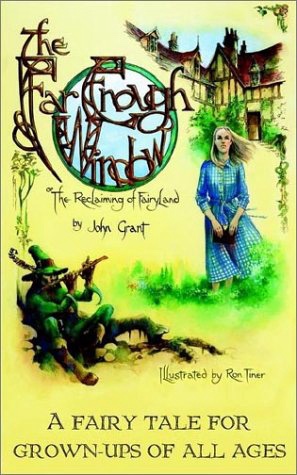
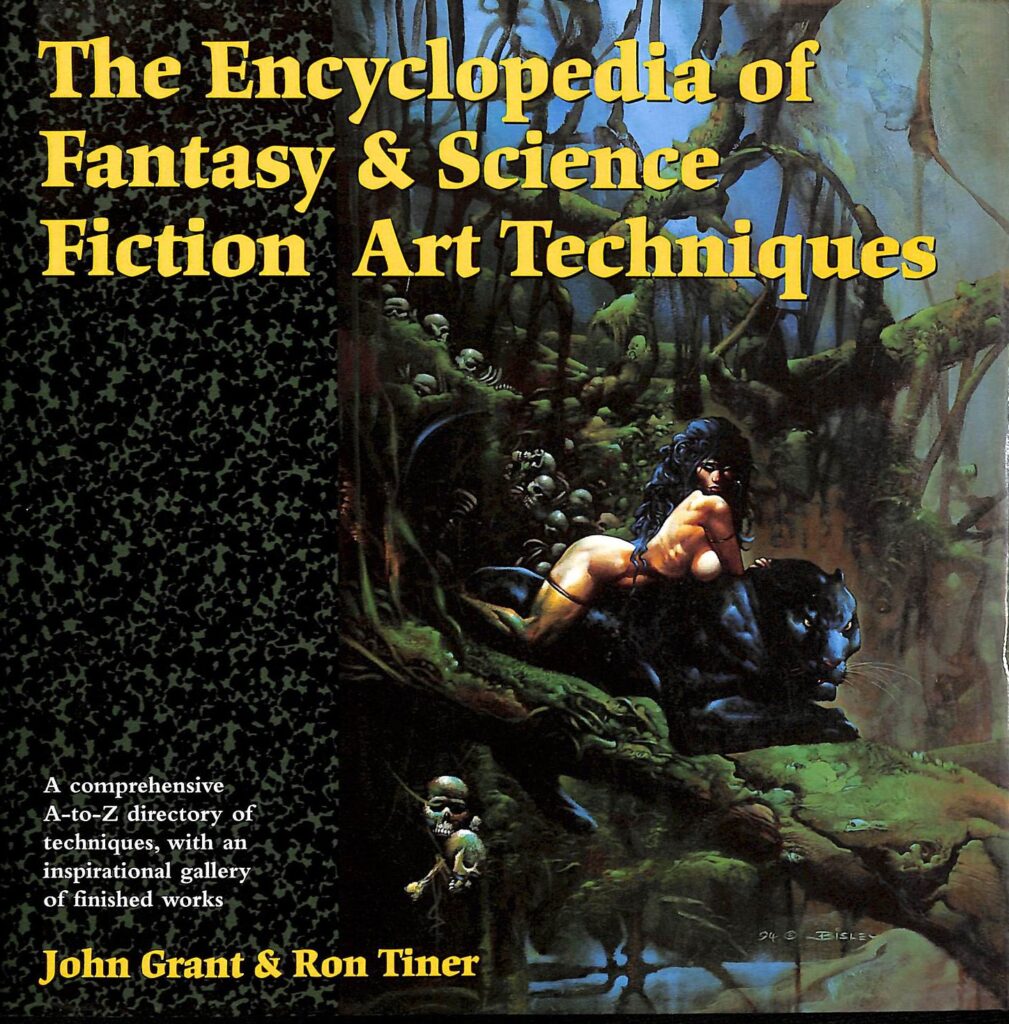
• The Far-Enough Window by John Grant (Paul Barnett) and Ron Tiner
A marvellous adult fairy tale adventure, populated by legendary characters
• The Encyclopedia of Fantasy and Science Fiction Art Techniques by John Grant (Paul Barnett) and Ron Tiner
First published in 1996, this A-Z features professional tips and step-by-step instructions for a variety of styles, from horror to heroic fantasy and creatures to characterisation. There are entries on all major tools and techniques, such as acrylics, airbrush, animation and computer software, pen & ink and explanations on how to apply each one.
• Lou Anders interviewed Paul about The Far-Enough Window and his Encyclopaedia here for Infinity Plus
“Right from the start I’d wanted my ol’ buddy Ron Tiner to illustrate [The Far-Enough Window] – all the best of those children’s fantasies had had nice black-and-white illustrations in them, and thus so should this one, to help sustain the affect I was after. Ron had been a sounding-board when I was initially thinking the novel over, and he knew precisely what I was after with it — he had exactly the same emotions as I had about those childhood times of being in bed with a good book!“
Other Tributes to Ron from…
“I met Ron when he was teaching on the ‘Sequential Illustration’ course at Swindon College, when it was the only comics art course in the UK. He was a fellow Devon resident and we kept in touch. He’d set the world to rights and I would continue my pledge to be a foot-soldier in the coming comics revolution.
There’s a bit to unpack here, because who I am as an artist is a big part of my life and quite a lot of me as an artist, to an extent, was shaped by Ron. There was a lot we didn’t quite agree on, but that’s life and the warmth of feeling towards a fellow artist, regardless of tastes, was always there.”
– Artist Lee O’Connor
“Ron was a real one who passionately cared about his students and sequential art. When I started drawing comics there was only one of two places in the UK where you could specialise in this art form. His care and passion is the reason I still a massive comic fan and still striving in this field.”
– Artist Crazy Stencil
“I’m saddened to learn of the recent death of artist Ron Tiner, who had freelanced for many comics over the years… A self-taught artist, he had worked hard to accomplish his aims and was truly respected by his peers.
“… I knew Ron because of our associaton with Oink! comic nearly 40 years ago where he illustrated a short series I wrote called Sherlock Hams and The Hog of the Baskervilles. (Oink! Nos.45 to 49, back in 1988.)
“Over the years, I’d bump into Ron at comic cons and he was always friendly company. Even when he wasn’t a guest he’d sometimes drop in just to catch up with his friends and colleagues… An amazingly talented and respected artist who will be missed.”
“It’s no exaggeration to say Ron’s work on OiNK was always a highlight of any issue he appeared in, and some of the finest examples of parody from the comic.”
– Philip Boyce, The Oink! Blog
“Ron and I exchanged lengthy letters about drawing, storytelling, all manner of European comic masters and even travelled to Lucca together for the comic festival there, which was quite an experience.”
– David Roach
“So sorry to hear about the passing of comic artist Ron Tiner. In the 1990s, he threw some work my way, a great kick start to my career.
“He lived in Exeter just up the road from me and we popped round each other’s houses for coffee and chat. Last time just after Covid. I didn’t get to say much at these meetings, mostly one way conversations that went on for hours, bless him. He told me his life story about three times, very interesting it was too.
“He had a fascination for comics and talked at length about the artists, their work and their lives. He had a need to dissect a page of artwork to find out why and how it worked.
“He’ll be missed, Thank you Ron.”
– Artist Henry Flint
In His Own Words… Ron Tiner on Illustration
I was very sad to learn of the passing of Ron Tiner. He was generous in his support of Downthetubes for a long time, and I will miss him, and his sage advice. But, talking of advice, here is a wonderful post by Ron, written back in 2015, shortly after he joined Facebook: advice for artists that I’m sure he would want to leave to as wide an audience as possible. He will be very much missed. Shine on, sir…
– John Freeman

“Today I’m posting a figure sketch that took me about 10-15 seconds to draw, with, alongside it and scanned at a much smaller scale, about eight pages of a sketchbook I had with me when I attended an SF convention. They were not done to be looked at or appraised as examples of anything – they are just practice.
“I’ve said elsewhere that, when I left school, I didn’t go to art college – my dad insisted that I got a ‘useful job’. (‘Be a carpenter, boy! With skill at your fingertips, you’ll always be able to earn your keep.’) So when I eventually threw caution to the winds and decided to draw pictures for a living, I realised that I would have to train myself. And in any profession where you survive solely on the level of your skill – musician, footballer, ballet dancer – you expect to spend several hours every day practicing – that’s hours every day, and that’s hours every day! So that’s what I did.

“As an illustrator, you have to be good at drawing people, so everywhere I went, I had a sketchbook with me and I drew people – from life – all the time. And what you find yourself recording is the subtle tilt of a head; the set of a shoulder; the pull of the cloth at an elbow or armpit… And what’s happening while you’re dong it is – it’s your hand that’s learning how to do it!
“I know that sounds weird, but it’s true – you already know it in your head, otherwise you would never be able to read other people’s body language in everyday life, or recognise when you get it wrong in a drawing. But it’s not enough to know it in your head – your hand has to know what you mean. Somehow the link between eye and hand has to be so firmly established that you get the drawing right just because you’re thinking it as you draw. I believe that’s achieved through practice. Lots of it.
“When dancers and footballers finish a practice session, there’s nothing to show for it, because it’s just a process of honing skills – keeping ’em sharp. What these drawings are, is the residue of practice – part of that process. Not posted here as examples of anything.
“But it’s nice to see how much can be ‘said’ with a few lines.”
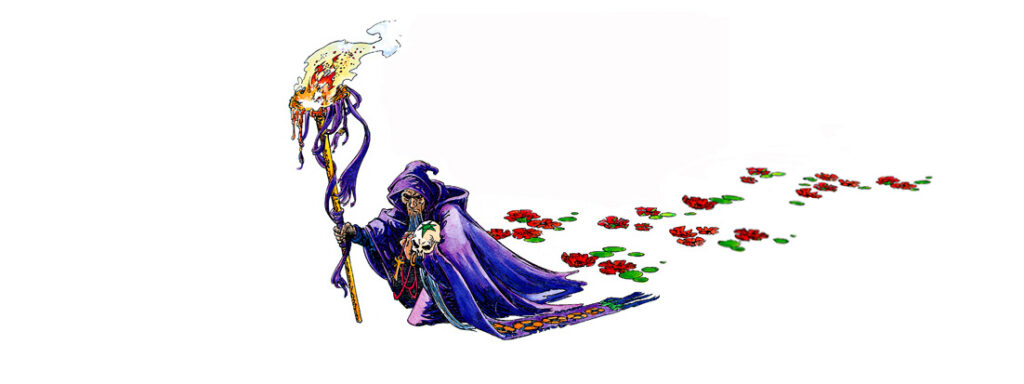
Categories: 2000AD, British Comics, Comic Art, Comics, Creating Comics, downthetubes Comics News, downthetubes News, Features, Obituaries
 In Memoriam: Comic Artist Kevin O’Neill 1953 – 2022
In Memoriam: Comic Artist Kevin O’Neill 1953 – 2022
Peripheral to your group on Facebook, Ron Tiner was one of two artists – the other being Steve McGarry – who illustrated the K-9 Annual 1983. The art is usually misattributed to Glenn Rix, who only did the cover.
One of Ron’s originals is currently up on eBay: https://www.ebay.co.uk/itm/196645382926
I am fortunate to have a commissioned piece by Ron, which was the start of a strip based on Germany’s 1960s SF series Raumpatrouille. Unfortunately, ill health & other work meant he did not continue the strip, even though I had the scripts ready.
Thanks, Shaqui! Extra information always appreciated